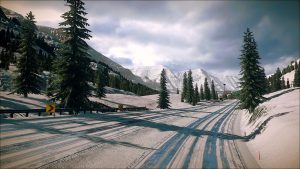Nov 2016
Winter Driving Tips

Winter is fast approaching, and with it comes adverse driving conditions. It’s important to take steps to ensure both you and your vehicles are ready. EMKAY put together a list of winter driving tips to make sure you’re prepared for whatever the winter months throw your way.
Pack a Winter Travel Kit
It’s important to prepare for the unexpected when driving in winter conditions. Something that should remain on hand is a safety kit that will aid in the event you become stranded. This kit should include a large water bottle, an ice scraper, sand or cat litter for traction, snacks, blankets, a flashlight, and even a book or portable radio for entertainment. In all likelihood you should never need this kit, but it’s always best to be prepared.
Know How to Handle a Skid
You’re driving along through the winter wonderland and all of a sudden the back end of your vehicle begins to slide out. What do you do? Scream? Close your eyes and hope for the best? The correct response is often phrased as “turning into the skid,” which leaves a bit of room for interpretation. Another way to look at it is to steer the vehicle slightly in the direction you want the front end to go. Doing this, while NOT applying the brakes, will help to straighten out the vehicle and get you back on track.
Reduce Speed
Speed limits are set for ideal driving conditions and this should be taken into account when driving during the winter. A general rule of thumb is to reduce speed by nearly 50% in snowy and icy conditions. Actions take longer in snowy conditions, including accelerating, stopping, and turning, so be sure to give yourself ample time to react to these differences by reducing your speed.
Ensure Your Equipment is Updated
It’s very important to keep your vehicle in top working order at all times of year, though this is especially true during the winter months. Always have your tires checked and battery tested prior to the winter months. Keep your washer fluid reservoir full and make sure your wipers are in good shape. Without these, having good visibility in a snowstorm will be about as easy as staying awake during a seminar on the migratory patterns of the Canadian goose.
Use Controls Lightly
Quick acceleration and braking will cause tires to lose traction, so it’s important to smoothly apply the gas and brakes. While it may sound like fun to slam on the gas and spray snow everywhere, it’s very overrated and will only help in getting you stuck. It’s also important to not grip the steering wheel too tightly, as this will cause you to lose control more easily. There’s no need for a white-knuckle approach.
Stay Alert of Present and Future Weather Conditions
Today’s advanced technology makes it easier to plan for inclement weather conditions. Be aware of possible storms and plan your travel accordingly. Try to leave earlier or later depending on when a storm is set to hit in order to avoid being on the road when the conditions are the worst.
Avoid Using Cruise Control
Though cruise control can be a very convenient feature, it’s best to avoid it when driving in winter conditions. You want as much control of your vehicle as possible, and this feature can provide a false sense of security. It will also delay your reaction time in the event of a need to apply the brakes, so keep complete control of your vehicle when in poor driving conditions.
Completely Clear Ice and Snow
Snow and ice should be completely cleared off your vehicle before taking to the road. We’ve all seen the cars driving by doing their best Haley’s Comet impersonation, with a tail of snow whirling behind them, mesmerizing (or blinding) all who stare into it. There’s also the possibility that chunks of ice will fly off and damage other vehicles on the road. So put on the hat and gloves, get the scraper out, and make sure your vehicle is cleared off!
Stay in the Vehicle if Stuck
It can be very dangerous to be outside of your vehicle in snowy conditions when stuck on the side of the road. When in this situation, it’s important to confirm that your exhaust pipe isn’t blocked up with snow, as this can cause carbon monoxide to build up in the passenger cabin. It’s also suggested to tie a few bright colored ribbons to your antenna or windows. Then it’s time to pull out you travel kit and await your knight in shining armor, or the tow truck, depending on who you called for assistance.



